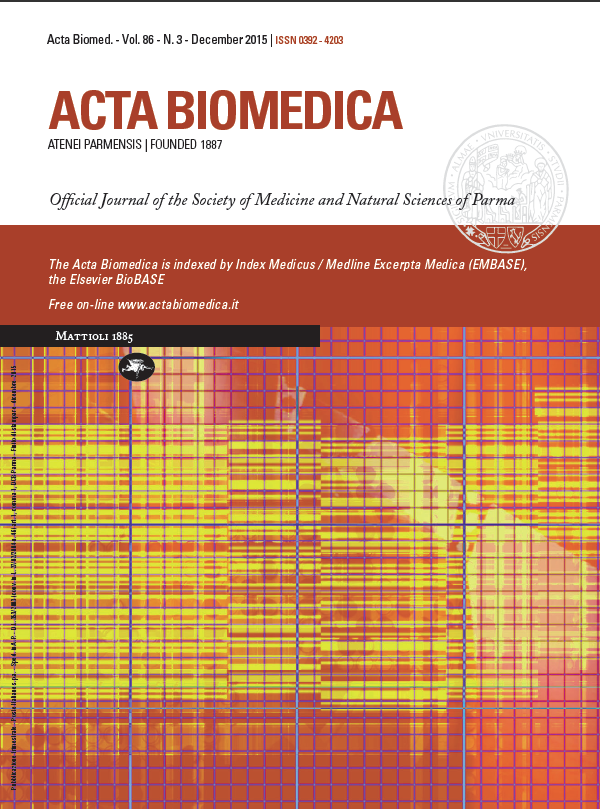Universal newborn hearing screening: the experience of the University Hospital of Parma
Keywords:
sensorineural hearing loss, hearing screening, rehabilitationAbstract
Abstract
Background and aim: Early diagnosis of congenital deafness is fundamental to minimize the negative consequences on a child’s educational and psychosocial development. To lower the age of hearing-impaired children at the time of diagnosis, universal neonatal hearing screening (UNHS) is considered essential. The aim of this study was to review tha data of the first 4 years of implementation of UNHS in the University Hospital of Parma.
Methods: 11624 infants born between February 2010 and December 2013 were included into the study. Transient evoked otoacoustic emissions were used as screening test. When the newborn had failed at the initial test, he was re-tested within 3 weeks from birth. If the same result was obtained at the second step, the newborns were referred for clinical auditory brainstem response. We calculated quality indicators and compared them with international guidelines.
Results: 11592 infants (99.7%) were screened during the birth admission. 10359 (88.5%) were well-babies, while 1233 (11.5%) had audiological risk factors. Among 11592 newborns screened, 42 (3.59‰) had a final diagnosis of sensorineural hearing loss. The incidence of deafness was 1.64‰ in well-babies, and 2.02% in neonates with audiological risk factors. Only 71 infants (0.6%) did not complete the screening program. False-positive rate was 1.7%.
Conclusions: The analysis of benchmarks and outcomes of UNHS demonstrated the good quality of our hearing screening program. Introduction of automated auditory brainstem response as well as enhanced enrollment of patients who do not complete the screening could further improve the quality program.
Downloads
Published
Issue
Section
License
This is an Open Access article distributed under the terms of the Creative Commons Attribution License (https://creativecommons.org/licenses/by-nc/4.0) which permits unrestricted use, distribution, and reproduction in any medium, provided the original work is properly cited.
Transfer of Copyright and Permission to Reproduce Parts of Published Papers.
Authors retain the copyright for their published work. No formal permission will be required to reproduce parts (tables or illustrations) of published papers, provided the source is quoted appropriately and reproduction has no commercial intent. Reproductions with commercial intent will require written permission and payment of royalties.



